- Home
- Management Discussion & Analysis
- PROFIT OR LOSS AND OTHER COMPRHENSIVE INCOME REVIEW
PROFIT OR LOSS AND OTHER COMPRHENSIVE INCOME REVIEW
REVENUE
Net Interest Income
AfrAsia Bank’s net interest income (NII) continued to grow progressively to make up for a significant 63% (2018: 59%) of the Bank’s total operating income. The Bank’s NII grew by a more than satisfactory level of 35% to reach MUR 2.3bn this year compared to MUR 1.7bn in the preceding year of operation. In terms of split, it is to be noted that the contribution of Segment B was to the tune of MUR 1.8bn, that is, 78% compared to 72% in the previous year with a noted increment of 46%.
Interest Income
Interest Expense
A rise of 23% in interest expense volume wise was noted in the reporting year reaching MUR 0.9bn, of which, 92% count as interest expense on customer deposits as a result of growth in customer deposit base in both local and international markets. The associated cost from deposits is mainly sourced from the fixed deposits slice of our deposit base which grew by 55% year-on-year. The cost of funds for MUR interest paying liabilities dropped by 19 bps to 2.40% while the FCY part rose by 11 bps to climb to 0.39% (of which USD rose by 12 bps to reach 0.56%).
Non-Interest Income
Non-Interest Income, represented 37% of the total operating income for the year under review, was at par year-onyear at MUR 1.4bn with the core components being:
- Net fee and commission income amounting MUR 426.8m; and
- Other revenue of MUR 955.9m.
The split can be illustrated as follows:
Net Fee and Commission Income
The prime sources of net fee and commission income increased from MUR 342.9m to MUR 426.8m, representing an increase of 24%. The growth is a matter of difference between its related income and expenses, with major component being commission income on local and foreign transactions reckoning a 38% year-on-year growth (2018: 18%).
The card business thrived from a consecutive two-year loss to a profitable turn to stand at MUR 16.0m representing a growth of 148% due to foreign exchange losses of MUR 18.9m sitting as part of the credit card expenses last year maintaining the loss trend from 2017.
Conversely, custody fees even though showing a positive allocation between its income and expense components shrunk by 24% down to MUR 107m (2018: MUR 141m) as an outcome plunging stock market indices and reinforced competitive forces on the market which drove trading tariffs down through aggressive sales strategies.
Other Revenue
Other revenue stood at MUR 955.9m for the year under review, this represents a 12% increase compared to the prior year at MUR 849.7m. Other revenue places itself as a major element of the non-interest income with a 69% contribution, the constituents are derived from earnings emanating from treasury activities including foreign exchange revaluation, profit on disposal of securities among others totalling MUR 916.9m.
Net Impairment Loss On Financial Assets
As far as credit exposure is concerned, the Bank recorded its impairment loss at MUR 468.4m which represented a drop of 56% compared to MUR 1.1bn in 2018.
The net impairment loss on financial assets was MUR 14.1m for Segment A and MUR 454.3m for Segment B as compared to last year of MUR 322.3m for Segment A and MUR 745.3m for Segment B, which is a decrease of 96% in Segment A and 39% in Segment B respectively.
Of crucial note that the Bank was also impacted by first time adoption of IFRS 9 – “Financial Instruments” effective 1 January 2018 and the resulting methodology of calculating impairment has changed coupled with a material reclassification surrounding the treatment of asset sell down amounting to MUR 23.9m sits in other revenue. The impairment figures were attenuated by bad debts recovered of MUR 89.2m (2018: MUR 8.6m).
The segmental split of the impairment is illustrated year-on-year as follows:
Total Operating Expenses
The Bank bolstered its investment in its human capital, information technology and infrastructure which has allowed us to deliver industry leading efficiency while investing in our talent. We have created and buoyed up a culture that is committed to enabling growth and progress through responsible finance. The Bank optimized its costs which resulted in a stable year-on-year cost-to-income ratio of 30%.
The Bank invested MUR 646.3m, that is, 58% of its total operating expenses to upgrade and sustain its personnel during the year compared to MUR 529.7m, that is, 57% last year. ABL’s total headcount increased from 368 in 2018 to 402 in 2019 as we continue to steer ourselves towards being an employer of choice in the industry.
The other major components of the Bank’s total operating expenses include amongst others:
IT related expenses including depreciation and amortisation which increased by 17% to MUR 123.3m in line with the set out strategy explained above. Advertising and marketing expenses increased by 30% to MUR 63.7m with a substantial chunk residing in the sponsorship of AfrAsia Bank Mauritius Open (ABMO). Special levy increased by 53% to MUR 63.8m, it is also of note that this item was previously part of income tax expenses and has been subject to a reclassification to operating expenses following changes in tax legislation in Finance Act 2018.
On the other hand, professional fees decreased by 24% to MUR 48.4m due to an exceptional refund of fees and communication cost remained mostly stable at MUR 42.2m.
Impairment On Receivable from Subsidiary
In line with the requirements of IFRS 9 – “Financial Instruments” under paragraph 5.2.2, the Bank assessed the recoverability of the receivable balance with its subsidiary based on the cash flow forecast of AfrAsia Capital Management Ltd. An impairment of MUR 103.0m was recognised in the financial statements.
Taxation
The Bank’s income tax expense as at 30 June 2019 as per its Statement of Profit or Loss and Other Comprehensive Income comprises of Corporate tax and Corporate Social Responsibility (CSR) and deferred tax.
The corporate tax as at 30 June 2019 is at 15%, with a deemed tax credit of 80% applicable for Segment B income.
Corporate Social Responsibility (CSR) is at 2% of taxable income under Segment A of the preceding financial year paid to Government-approved CSR projects. The CSR contributions for 2019 is MUR 6.5m compared to MUR 11.6m for 2018.
Following the Finance Act 2018 and 2019, there were several changes in the corporate tax and special levy computation.
Corporate tax – as from 01 July 2019, the tax rate for banks in Mauritius will range between 5% to 15% depending on the chargeable income.
Special Levy for prior years was recorded under income tax expense. Following the Finance Act 2018 and 2019, Special Levy is now classified under the VAT Act and therefore does not meet the criteria of income tax expense as per IAS 12 – “Income Taxes”. As a result, from this financial year, the special levy is recorded under operating expenses at a rate of 4.5% of leviable income. Leviable income is defined the sum of net interest income and other income from banking transactions with residents (Segment A) before deduction of expenses. The special levy increased from MUR 41.5m in 2018 to MUR 63.8m in 2019 due to increase in leviable income.
The deferred tax asset is aligned to the new tax rate of 5% as the asset will be utilized in future years at the new tax rate. The impact is recorded in the Statement of Profit or Loss as at 30 June 2019.
Overall, the Bank’s income tax expense increased by 69.4% from MUR 141.2m in 2018 to MUR 239.2m in 2019. The effective tax rate decreased from 15.6% in 2018 to 13.1% in 2019. The lower effective tax rate was on mainly account of the reclassification of special levy to operating expense.
